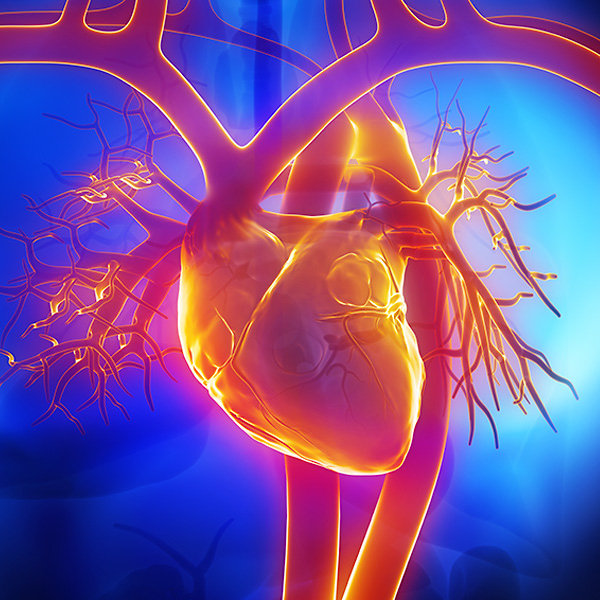Cardiac Defibrillator Implantation
Device Implantation to Diagnose and Manage Heart Arrhythmia
Loyola Medicine’s expert team of cardiac surgeons is highly skilled at utilizing implantable cardiac defibrillators (ICD) to treat heart arrhythmia.
Also known as a cardiac implantable device, an ICD is an electronic device that attaches to your heart to monitor heart rhythm. If it detects a dangerous arrhythmia, it will deliver electrical impulses to your heart to shock it back to a normal rhythm. An ICD helps prevent cardiac arrest and sudden death in people at risk for dangerous heart rhythms.
Loyola’s Center for Heart and Vascular Medicine offers the experience and expertise of the nation’s top specialists in cardiology. Our multidisciplinary team of expert electrophysiologists, advanced practice nurses, pacemaker clinic nursing staff, imaging experts and other professionals works together to manage the diagnosis and treatment of heart arrhythmias.
Our state-of-the-art equipment allows physicians to use leading-edge technologies to perform procedures. Loyola also provides expertise in cardiac device management.
If you have had prior episodes of ventricular tachycardia, ventricular fibrillation or cardiac arrest you may be a candidate for an ICD. The treatment may also be used if you have the following:
- Certain heart conditions or heart defects
- Coronary artery disease history
- Heart attack that led to a weakened heart
Doctors at Loyola will work with you to understand your medical history, heart condition and general health to recommend a treatment that is right for you.
How Does ICD Work?
An ICD contains a small device called a pulse generator and one or more leads (wires) that connect the heart to the pulse generator. The pulse generator contains a battery and a tiny computer, which receives heart rate data from the leads attached to your heart.
The leads pick up electrical activity in the heart and send information about your heart rate to the computer. The computer is programmed to know the difference between a normal heart rhythm and irregular heart rhythms, so if your heart begins to beat abnormally, the computer tells the battery to deliver electrical impulses to your heart. Those impulses flow through the leads to your heart and shock your heart back to a normal rhythm.
The ICD’s computer can be programmed to deliver different types of therapies, depending on the type of heart rhythm irregularity you’re experiencing. The therapies can attempt to increase or decrease the pace of the heart rhythm or deliver a shock in the event you experience a dangerous heart rhythm.
There are three general types of therapies that can be delivered via an ICD:
- Cardioversion therapy — A higher-energy shock delivered at the same time as your heartbeat to help restore a normal rhythm when you’re experiencing more serious rhythm problems
- Defibrillation therapy — A fast, high-energy shock delivered to the heart to restore a normal rhythm when the heart is beating dangerously fast, is quivering or isn’t beating at all
- Low-energy pacing therapy — Used to treat tachycardia or bradycardia
What to Expect with an ICD
An ICD is implanted under a local anesthetic. Your surgeon will make small incisions in your chest where the leads will be inserted. Using a fluoroscope, your surgeon will attach the tips of the leads to the heart muscle, and the other end of the leads will be attached to the pulse generator.
Finally, the pulse generator will be placed in a pocket that has been created under your skin. After the leads are in place, your surgeon will "pace" them, a test to make sure they are placed correctly and functioning properly.
In addition to traditional ICDs, in some cases Loyola recommends a subcutaneous ICD (s-ICD), which provides the benefits of a traditional ICD without touching the heart. S-ICD uses a subcutaneous electrode to analyze the heart rhythm to correct irregularities.
Once the ICD is implanted, it monitors your heart rate. If it detects ventricular tachycardia (faster than normal resting heart rate) or fibrillation (rapid, irregular beating), it sends out a controlled burst of impulses to pace the heart. If this does not correct the problem, the ICD "shocks" the heart to restore normal heart rhythm.
Tachycardia can usually be corrected with small bursts. In this case, you may feel a flutter, palpitations or nothing. Fibrillation may require a "shock." The feeling you may experience only lasts a second and may feel like a strong sudden jolt or thump, usually felt in the back.
Your Loyola doctor will tell you how to respond when you receive a shock. It is best to sit down after you receive a shock, and call your doctor's office soon after.
What Are the Risks of ICD?
ICD implantation does not generally pose significant risk, but some risk is associated with the procedure itself and may include:
- Allergic reaction to the local anesthesia
- Bleeding from the insertion site
- Blood vessel damage
- Bruising or infection where the ICD was placed
In addition to risks related to surgery, if you have an ICD you may experience unnecessary electrical pulses due to a damaged wire or extreme physical activity. In some cases, people who have an ICD are at higher risk for heart failure.

